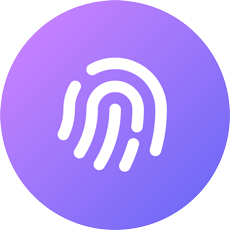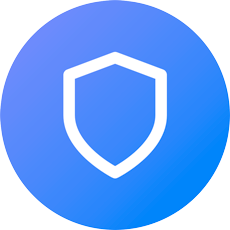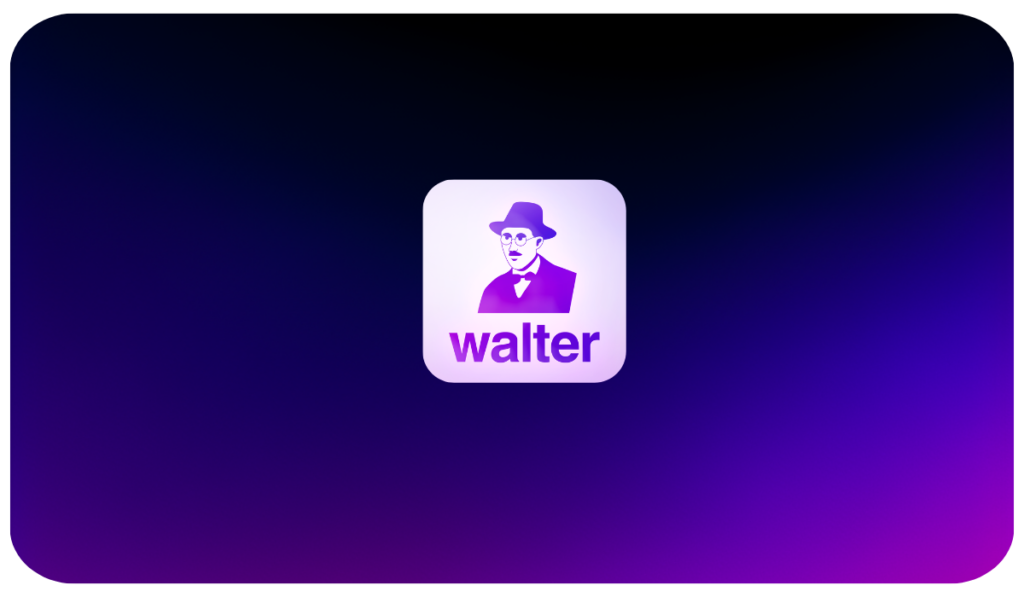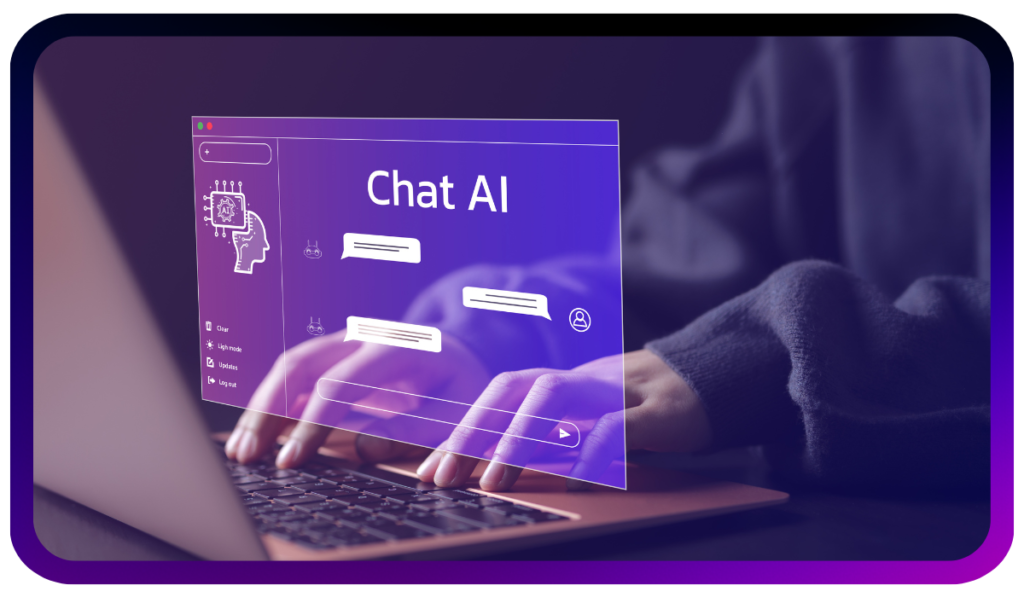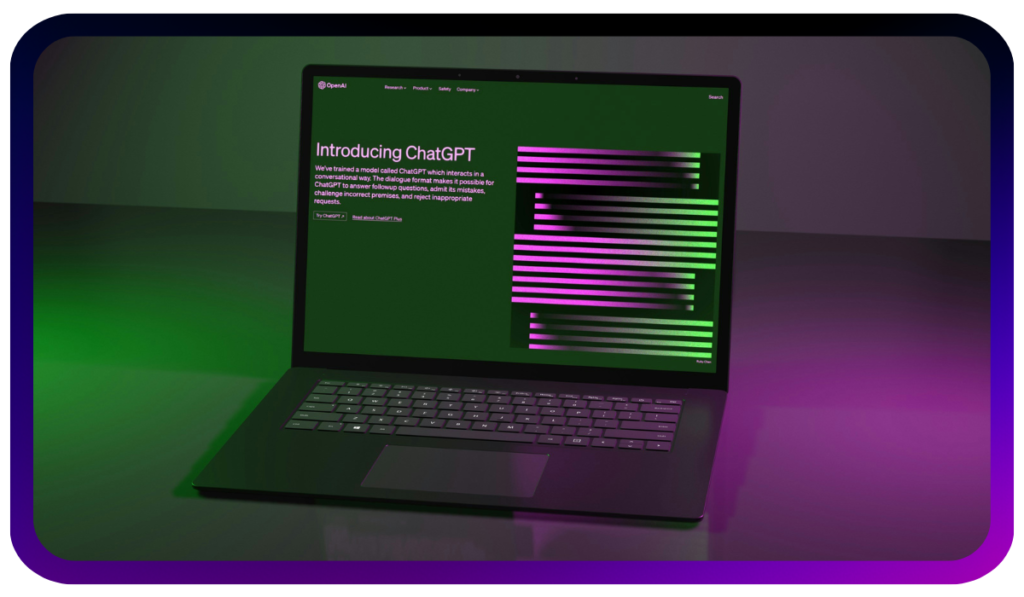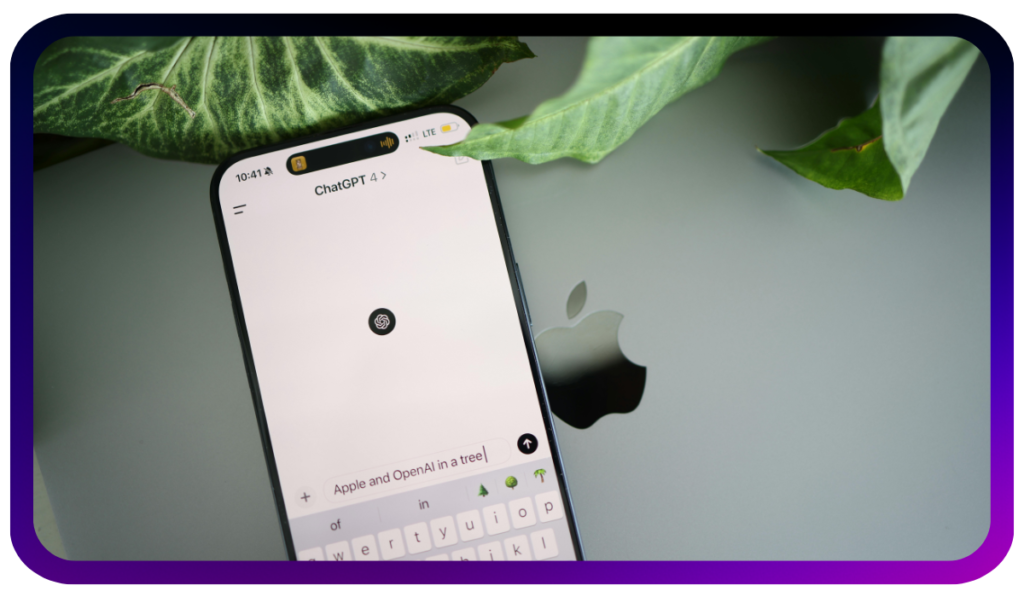Yes, colleges and universities can detect ChatGPT use. Institutions use AI detection tools to identify AI-generated content, plagiarism, and academic dishonesty. But there are ways to minimize detection risks.
In this article, we’ll explain how colleges detect ChatGPT, AI writing, and plagiarism—and what you can do to avoid being flagged.
Let’s dive in!
Why Colleges Are Concerned About ChatGPT
Colleges are worried about ChatGPT because it undermines academic integrity, circumvents genuine critical thinking, and skews accurate student assessment.
Getting ChatGPT content to look polished and believable makes it difficult for instructors to distinguish ChatGPT content from actual student work.
Gradually, the dependence on ChatGPT could undermine vital communication and research skills required for sustainable success in the future.
Can College Detect ChatGPT-Generated Content?
Yes, it can. While ChatGPT delivers relatively polished sentences, there are linguistic clues that might give it away.
For example, the tool sometimes relies on very formulaic sentence structures and may feature repetitive language or unusually polished transitions. Some reviewers are also surprised to note that text generated by ChatGPT tends to avoid overly strong personal positions and prefer balanced or neutral statements.
Those signs provide a clue for college officials who have become accustomed to how ChatGPT writes.
There are also specialized tools to analyze text for statistical anomalies common to ChatGPT, such as expected vocabulary choices and uniform sentence length.
These techniques (not fool-proof) offer schools a good mechanism for spotting text that students might not completely write.
Differences Between ChatGPT Writing and Human Writing
Human writing bears personal story, emotional nuance, and a certain style that carries its individuality.
On the other hand, writing generated by ChatGPT is often surprisingly uniform in tone and syntax, giving the text a smooth but often impersonal quality.
Humans also have a more nuanced way of varying the structure of sentences and words than ChatGPT, which might overuse certain patterns because they result in clearer combinations than creative ones.
Some of the best pieces of writing are sprinkled with sudden flashes of inspiration or personal experience, which come from actual thoughts or experiences of life.
ChatGPT can imitate these features but may be a poor substitute for genuine exploration or introspection.
As a result, college officials frequently seek out these organic qualities so they can differentiate ChatGPT-generated content from authentic student submissions.
ChatGPT Detection Methods Used by Colleges & Universities
Manual Review by Professors and Admission Officers
University staff often serve as the discovery tool for ChatGPT-generated material.
They spend years reading authentic submissions, so they are experienced with the nuances of a student’s voice and expertise.
At the moment, an application or paper that looks unusually polished or doesn’t seem individualized raises an instant red flag.
Reviewers might also look at current work vs. previous writing samples to spot inconsistencies suggesting ChatGPT involvement.
Use of Specialized ChatGPT Detection Tools
To complement manual evaluations, a number of institutions also use software developed to identify the linguistic characteristics of ChatGPT-generated text.
These tools generally run analysis for things like sentence structure, vocabulary distribution, overall cohesiveness and the like to seek out patterns that read less organic than bona fide student prose.
Some systems flag repetitive phrasing or consistent changes in tone, while others analyze a document against databases of ChatGPT outputs.
Common Red Flags in ChatGPT-Generated Text
1. Perfect grammar consistently can be a big red flag, as can sentences that are structured and formal to an unnatural level.
2. Certain writing will include unnatural, abrupt transitions that do not align with a natural flow of thought or human-like pacing.
3. Another red flag is a lack of personal anecdotes or genuine emotional detail, which are often critical components of authentic work.
4. An overreliance on polished phrasing without variation suggests that a generative tool likely did a lot of the work here.
Can You Use ChatGPT Without Getting Caught?
The best & easiest way to use ChatGPT without getting caught is to humanize the AI-generated text.
What is an AI humanizer tool, and how does it work?
An AI humanizer tool is a program that transforms AI-generated text into natural, human-like writing. These tools refine AI text to sound more authentic, making it harder for detection systems to flag it. They also improve readability, ensuring that your content aligns with human writing patterns.
For example, let’s generate a short essay using ChatGPT:
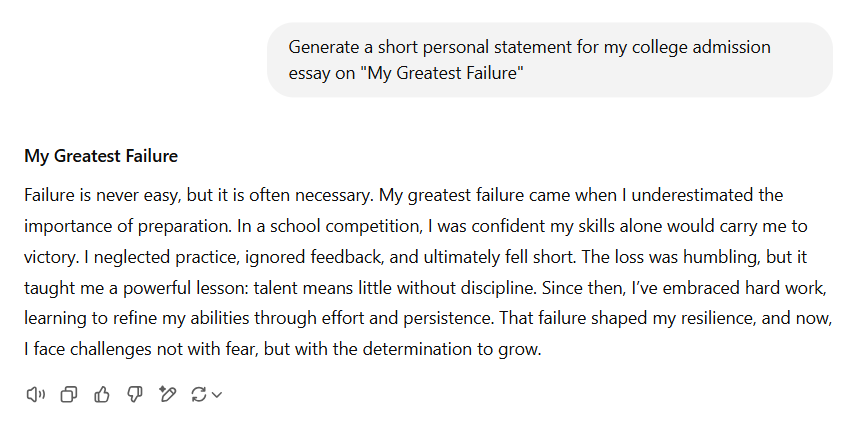
Now, let’s check this essay’s AI score using Walter Writes AI Detector:
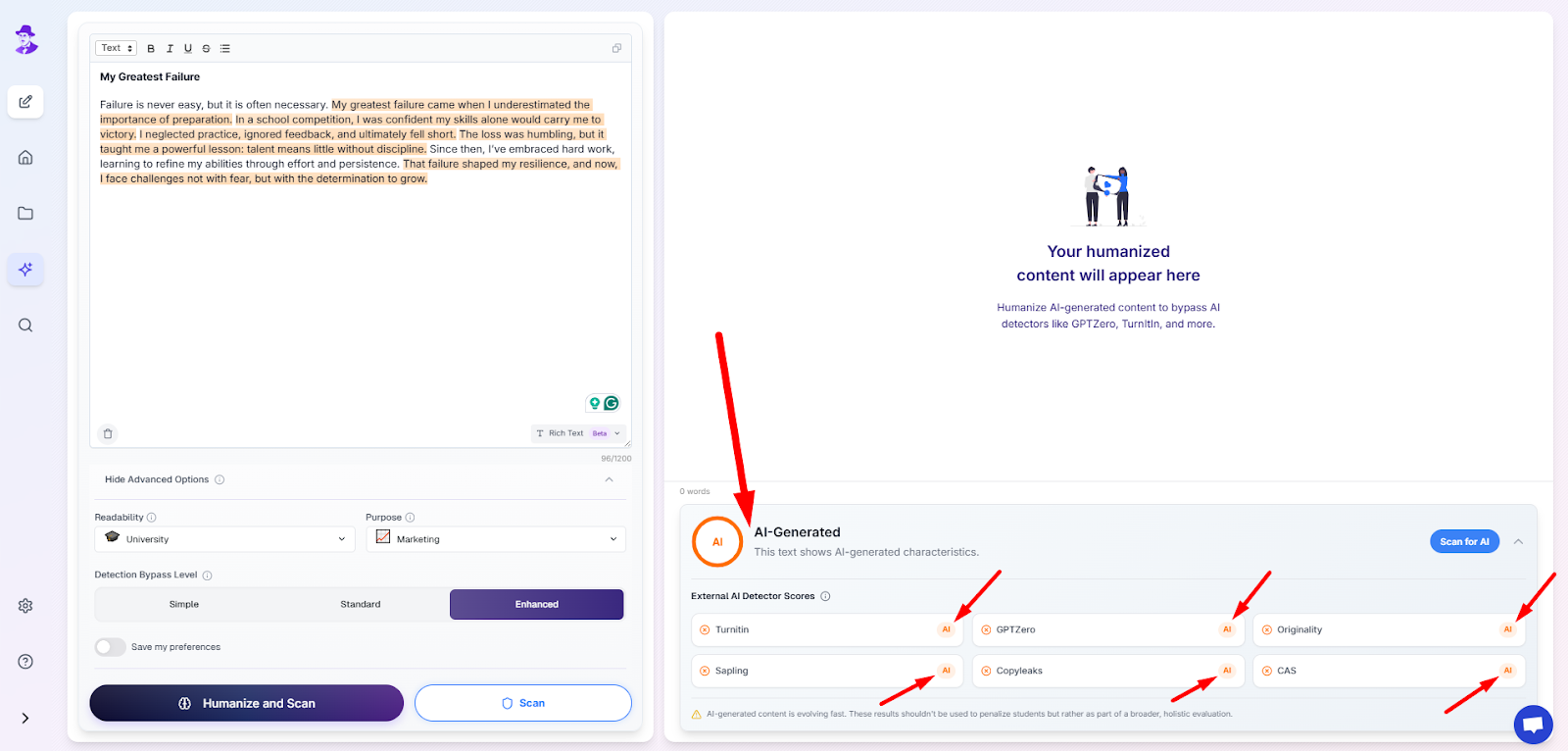
Next, let’s humanize this text with one of the leading AI humanizer tools, Walter Writes AI Humanizer:
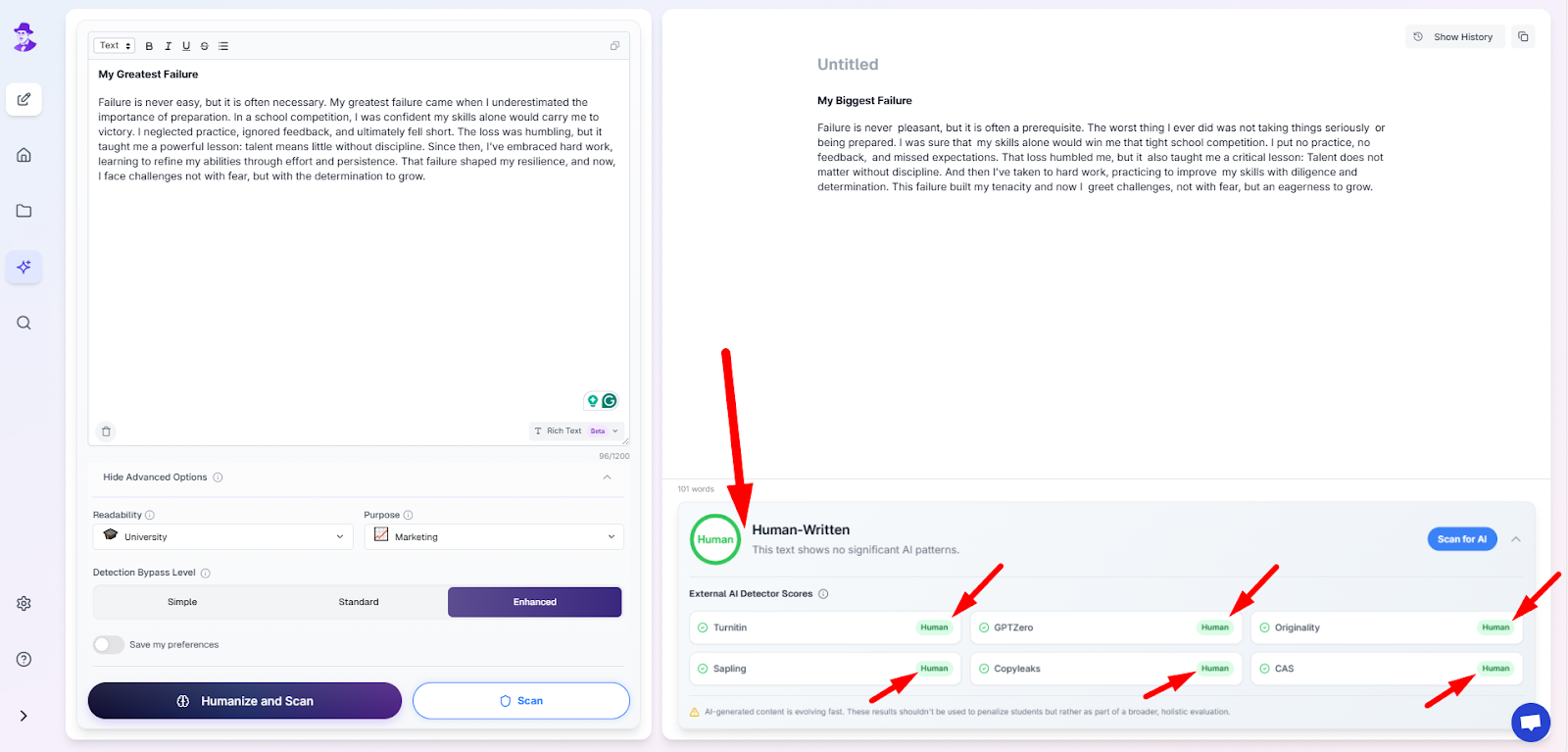
With just one click on the “Humanize and Scan” button, the essay now reads as entirely human-written and is ready to pass AI detection systems used by colleges and universities.
You might think we’re biased toward our tool and that we only showed one successful example. Why not test it for yourself and see if you can prove us wrong?
Try Walter Writes AI for free (300 words): https://app.walterwrites.ai/register
Ethical concerns and long-term learning impact
Using ChatGPT too much for college essays and tasks can cause problems with authenticity, fairness, and academic growth.
When students offload major segments of writing tasks to ChatGPT, they risk being short-circuited from the critical thinking and problem-solving experiences that are the very pillars of higher education.
A failure to make that effort can impede their mastery of critical skills for communication and inhibit their academic progress for the long haul.
Another worry is unequal access to ChatGPT. While many can access it now, not all students have equal resources or reliable internet connections.
The ones who can’t easily leverage ChatGPT might be at a disadvantage if their peers are using it for polished papers.
The resulting disparity can widen already-existing educational gaps and work against the ideal of equal opportunity in academia.
Also, misuse of ChatGPT hinders your personal and intellectual growth. It shouldn’t simply be about fulfilling requirements; college is an opportunity for students to practice finding and honing their voices, thoughts, and nuanced ideas independently.
Ultimately, it’s all about finding the balance.
Conclusion: Can Colleges and Universities Detect ChatGPT?
Yes, colleges and universities can detect ChatGPT use. Institutions use AI detection tools and manual reviews to identify AI-generated content and ensure academic integrity.
You can use ChatGPT safely by humanizing AI-generated text. AI humanizer tools refine AI text to sound more natural and personal, reducing the risk of detection.
Over-reliance on ChatGPT can harm long-term learning. While AI can assist in brainstorming, relying too much on it can undermine critical thinking, writing skills, and academic growth.
Humanize your essays for free! Try Walter Writes AI now!
